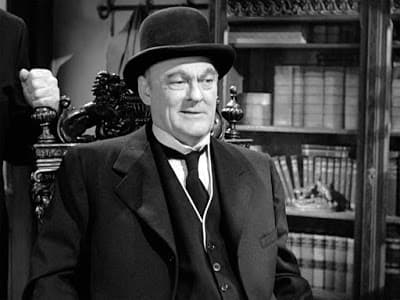Lionel Barrymore: The Character Actor With the Get Up and Go
Kathleen Spaltro has written a moving biography, providing delicate, wistful evocations of Barrymore’s marriages and of the daughters who died before they reached maturity.

‘Lionel Barrymore: Character and Endurance in Hollywood’s Golden Age’
By Kathleen Spaltro
University Press of Kentucky, 256 pages
When I met the star of MGM’s “Dr. Kildare” films, Lew Ayres, I had to ask him if Lionel Barrymore was actually like his character, Dr. Gillespie, the gruff, wheelchair-driven character who mentored the young, earnest physician. Ayres assured me of Barrymore’s benevolence. So powerful was Barrymore’s portrayal of acerbic authority figures, though, that he was also the voice of Ebenezer Scrooge in radio broadcasts of “A Christmas Carol” between 1934 and 1953.
Barrymore could seem forbidding in screen and radio performances, but generations of actors were in awe of his genius and of his membership in an acting dynasty that included his leading-man brother, John Barrymore, and sister Ethel Barrymore, celebrated as the “first lady of the American theater.”
Yet for all of Lionel’s success on stage, in silent films, and then in hits such as “The Road to Glory (1936),” “You Can’t Take it With You” (1938), “It’s a Wonderful Life” (1946), and “Key Largo” (1948), he insisted that he did not like acting. He had turned to it because opportunities were available to a Barrymore, and he could not make a living as a painter or composer. Kathleen Spaltro makes a good case for suggesting that Barrymore’s devotion to the arts enhanced his acting.
While Barrymore found script writing unworthy of the highest art he aspired to create and didn’t like directing, he worked hard at the acting profession, forsaking nerve-wracking stage productions for movie sets. Even after achieving considerable success that resulted in a reputation as a great character actor, though, he doubted he was good enough.
Why were Barrymore’s cantankerous characters so appealing — like Walter Brennan’s grandpa in “The Real McCoys,” with that hitch in his walk that expressed both his frailty and indomitability? Ms. Spaltro quotes Ronald Reagan, who had the answer: “He could whip that contrivance around on a dime.”
Barrymore used the wheelchair like General Patton used tanks, making machinery the vehicle of a relentless personality. “So adept was Lionel both in his acting of his part and in his maneuvering of the wheelchair,” Ms. Spaltro reports, “that other actors perceived the wheelchair as his means of stealing scenes.”
Initially, MGM worried about how viewers would respond to Barrymore in a wheelchair, necessitated after he broke his hip and never fully recovered from that accident and others, so that walking was difficult in an era before hip-replacement surgery became common. Audiences did not seem to care about the wheelchair, and Barrymore appeared in nine “Kildare” films and reprised his role on radio.
How disappointing, then, to learn from Ms. Spaltro’s biography that Eleanor Roosevelt objected to Barrymore playing her husband. Barrymore was an outspoken critic of the New Deal, to be sure, but as one of the first lady’s sons realized, you could not find a better actor to personify his father. Yet she would not relent, making the mistake of thinking, in this case, that the actor playing a role could not transcend his politics. Barrymore knew better and tried to placate Roosevelt, but she would not budge.
Would Roosevelt have felt differently if she knew about Barrymore’s relationship with a child actress, Margaret O’Brien, and could have seen how he nurtured and appreciated her talent, bestowing on her one of his most prized Barrymore heirlooms?
Ms. Spaltro has written a moving biography, providing delicate, wistful evocations of Barrymore’s marriages and of the daughters who died before they reached maturity. He had to live with the anguish of their loss and the physical pain of his injuries, but never allowed his suffering to dominate his life or career. He had the satisfaction, as well, of seeing his artwork appreciated by collectors and hearing symphony orchestras perform his compositions.
Lionel Barrymore’s biography, in Ms. Spaltro’s well-told narrative, is about the longevity of greatness and its impact on a world that can still be liberated by his get up and go.
Mr. Rollyson has written biographies of Marilyn Monroe, Dana Andrews, Walter Brennan, and Ronald Colman.

